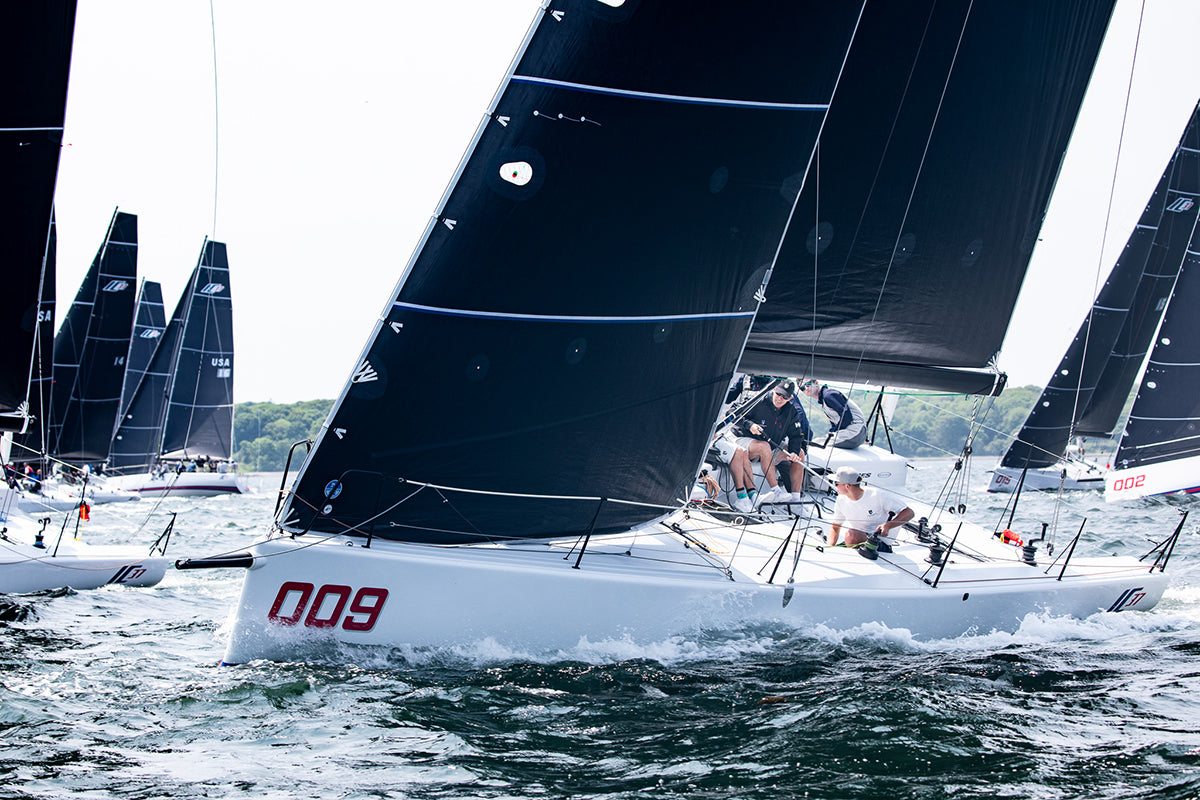MELGES IC37 TIPS: VOLUME FOUR
MELGES IC37 TIPS: VOLUME FOUR
Expert Notes On IC37 Boathandling and Boat Trim

North Sails experts have been busy figuring out the IC37 since the first boat became available in 2018. In Volume Four of our class tips, we suggest solutions to some common boat handling challenges.
See also: Experts Notes On IC37 Sails | What We Learned at The Leukemia Cup | Training Weekend Notes
Best Practices for One Winch from a Pro Pitman
Pro Pittman Aubie van Beuren shares his suggestions and best practices. At the start, have the jib halyard loaded on the winch with the handle in and the clutch open. That allows for quick tensioning and easing of the halyard in tacks, as conditions warrant.
On the offset leg, the pit person hikes as long as possible and then goes legs in to transfer the jib halyard from winch to clutch. Some halyard tension will be lost, but the luff should be softer for the offset and downwind legs. The winch is now available for the spinnaker hoist.
The kite halyard should live on the winch for the downwind leg. I will also wrap the tack line around the winch with a couple of “safety wraps” to prevent slipping. If the tack line needs to be adjusted, the spinnaker halyard can be temporarily transferred to the clutch.
At the bottom mark, use the winch to control the spinnaker halyard through the drop. Once the kite is under control, load the jib halyard onto the winch and tension as needed for the windward leg. Finally, open the clutch to allow for fine tuning upwind.

Best Boat Trim
Crew weight on the IC37 needs to be as active side to side as it is fore and aft. Since the boat is very wedge-shaped, more heel makes the bow want to drive down into the water. To compensate, move the crew aft earlier up the wind range than expected.
There are two good rules of thumb for most conditions about where the crew should sit:
- How much noise does the water make exiting the transom? If you hear a lot of bubbling/gurgling noises, your crew is too far aft.
- The knuckle of the bow should always be about two inches underwater. If more than that is submerged, your crew is probably too far forward.
In very wavy conditions, we add a third rule of thumb: If you take three waves over the bow in quick succession, you are too far forward in the boat.
In very flat water, pressing farther forward than normal will help reduce wetted surface.
On the downwind legs, when there is enough pressure to be constantly planing, moving weight farther aft will help stabilize the boat. Getting more of the wide stern in the water and getting the bow out helps the boat track better and makes it easier to drive. If there is too much weather helm downwind, it could be because the crew weight is too far forward and the bow is digging in.
Visit and bookmark the IC37 Class page, your one stop for IC37 resources from North Sails.




























